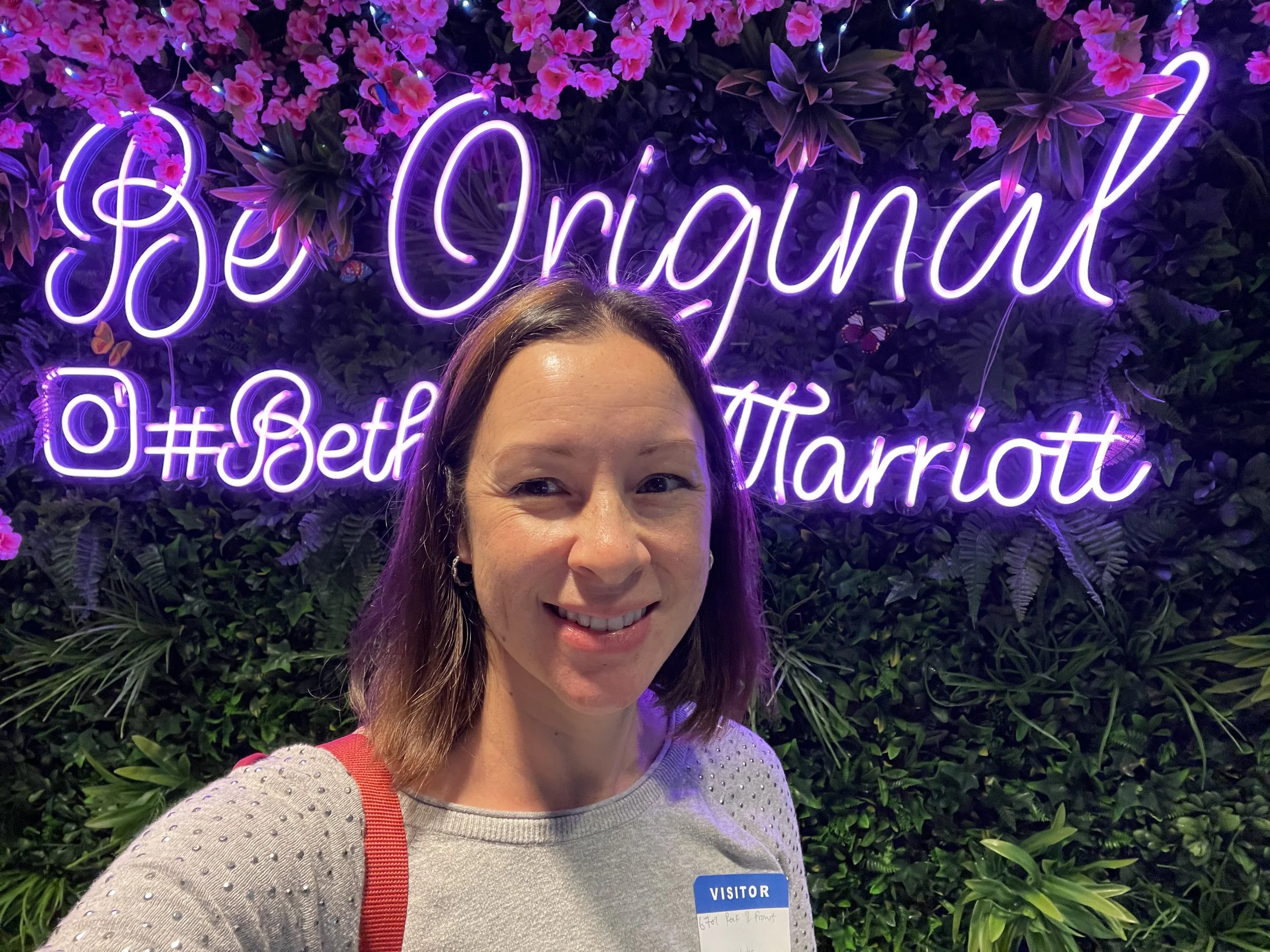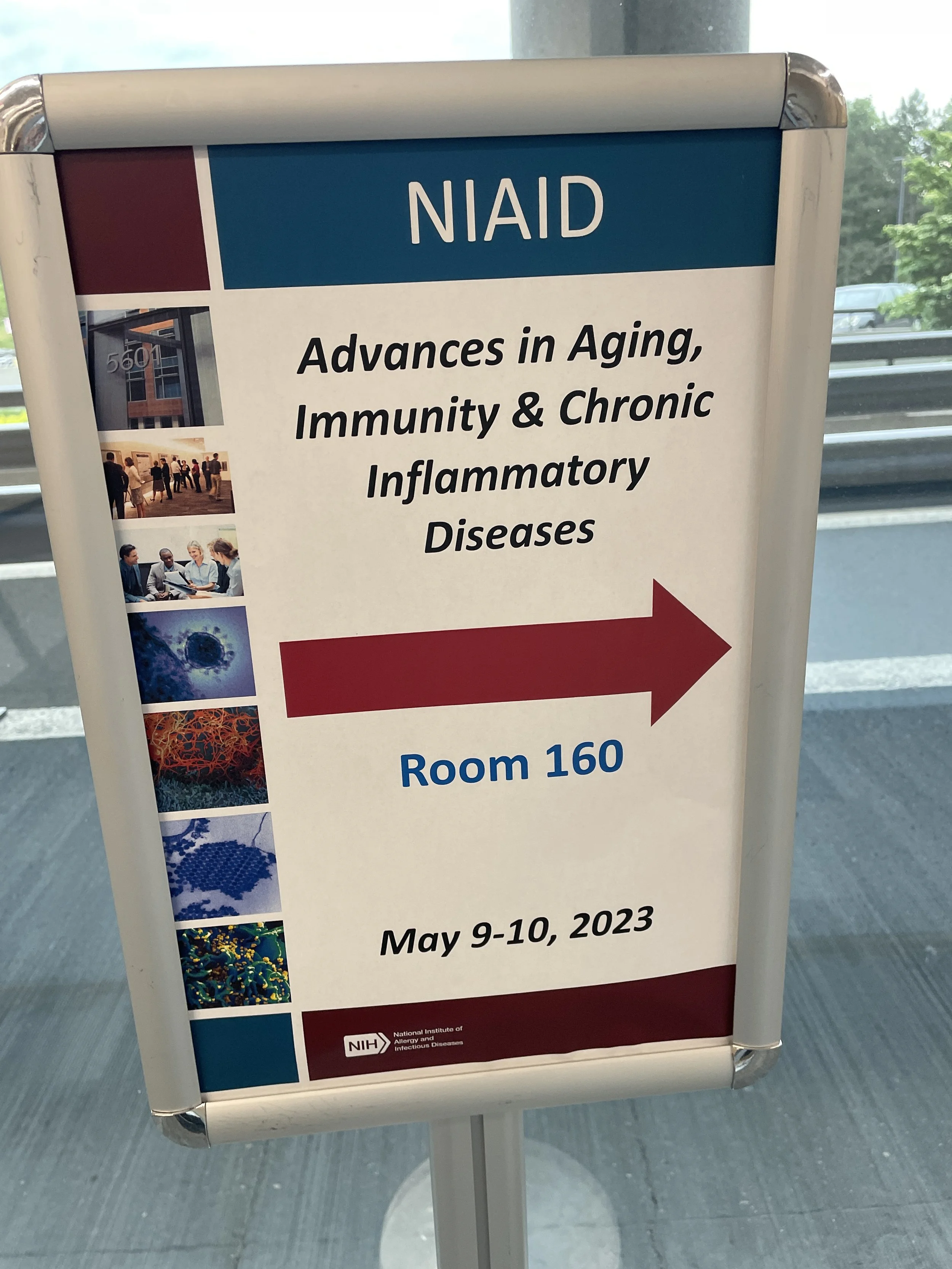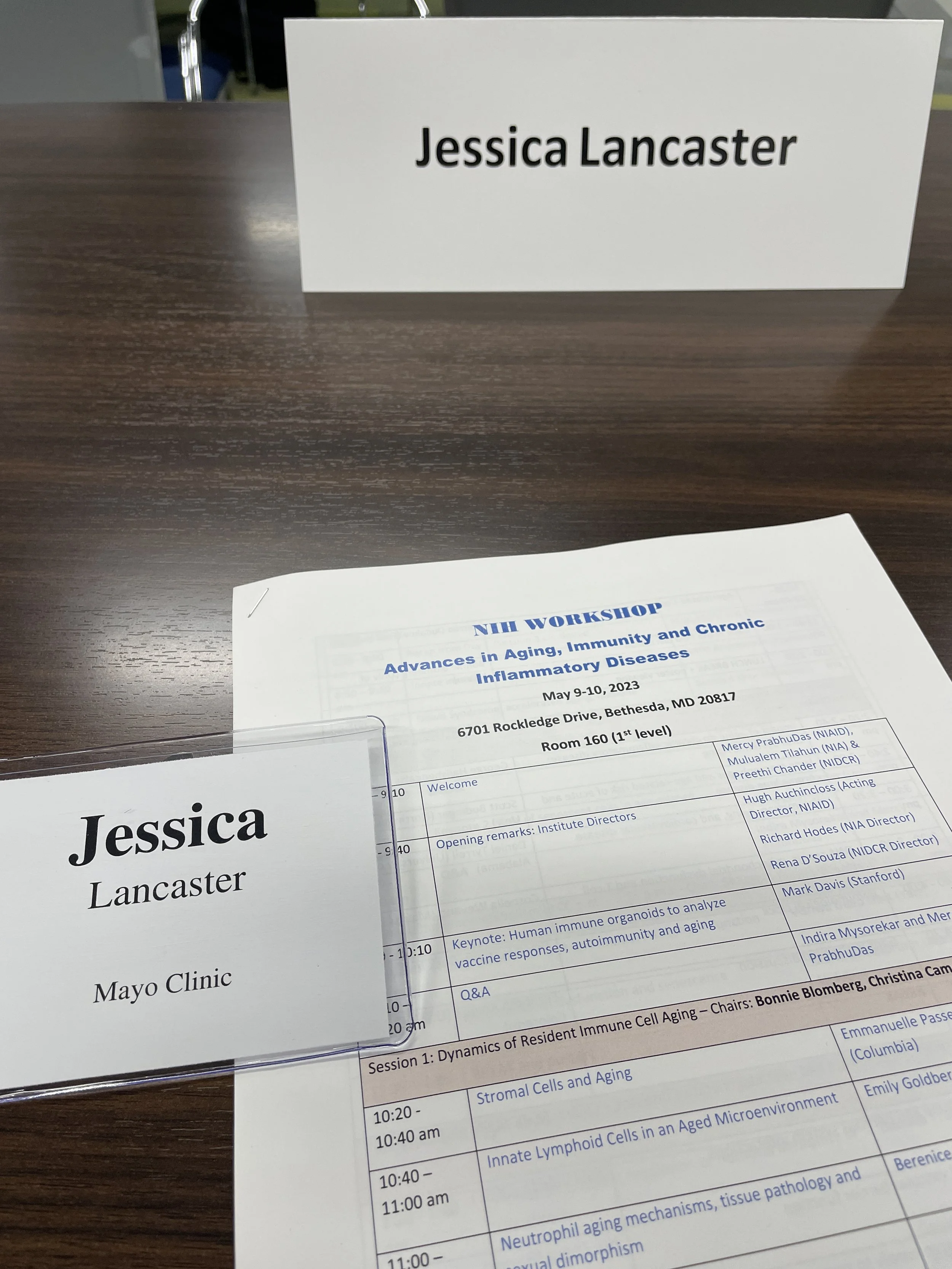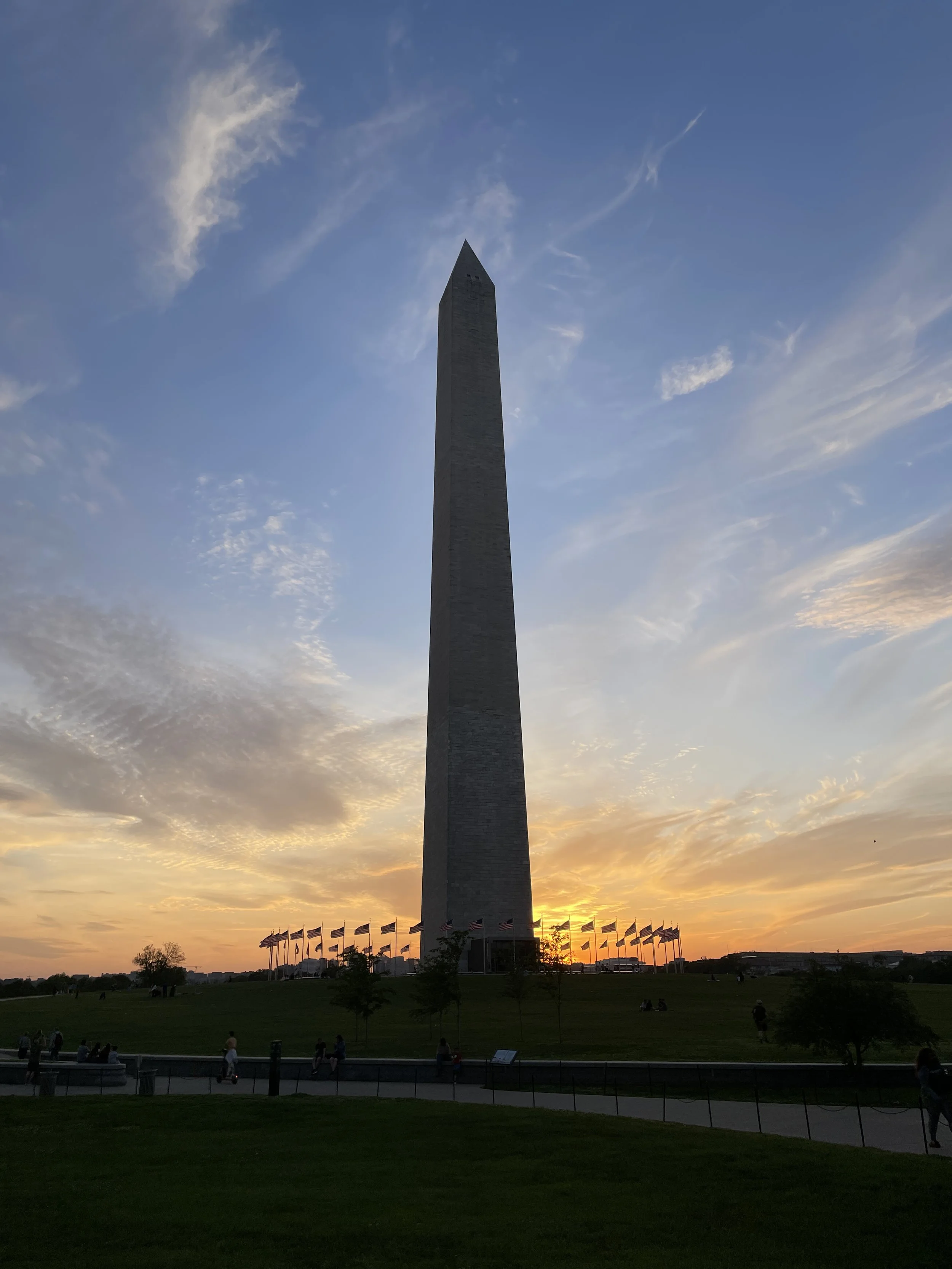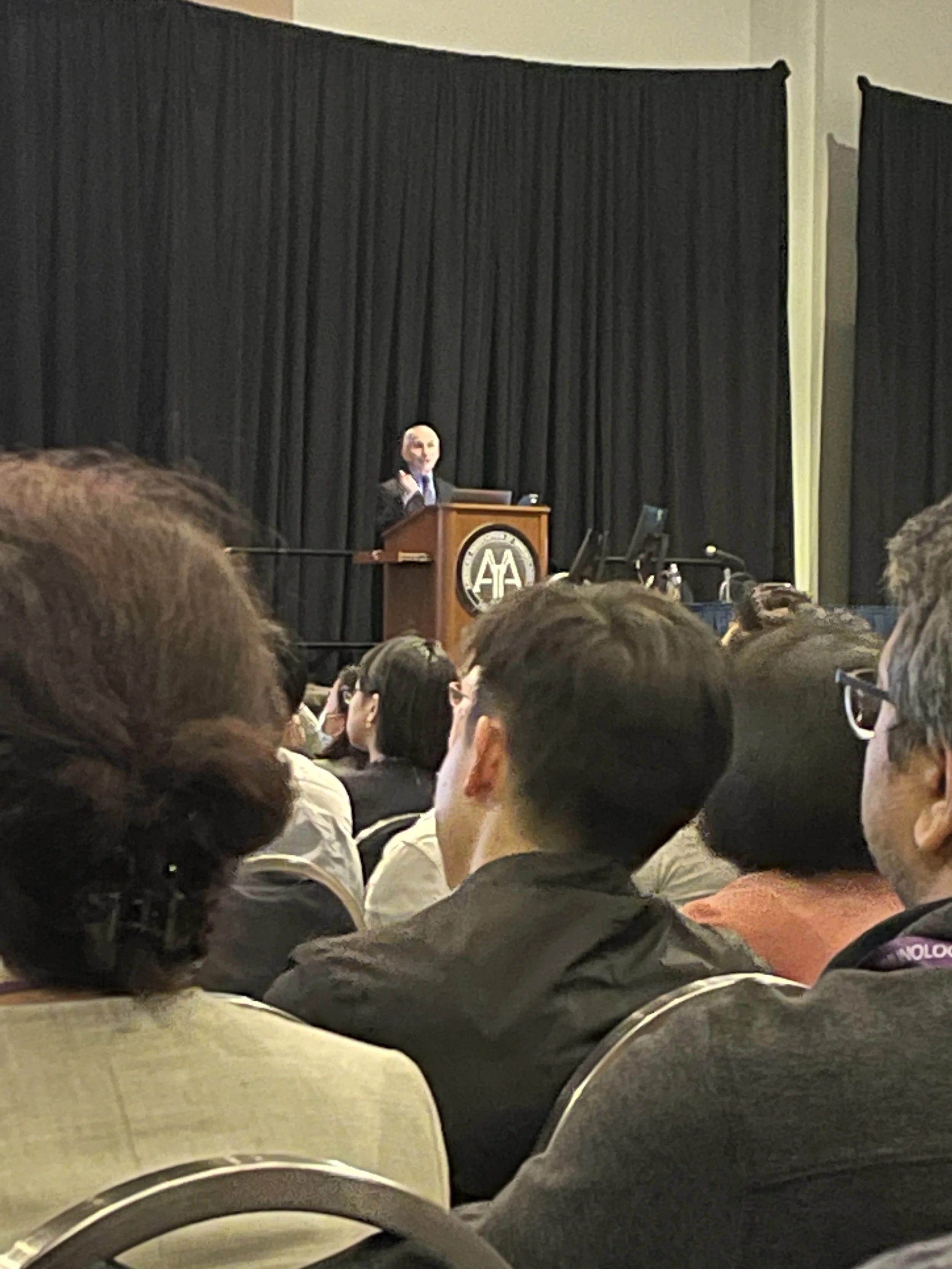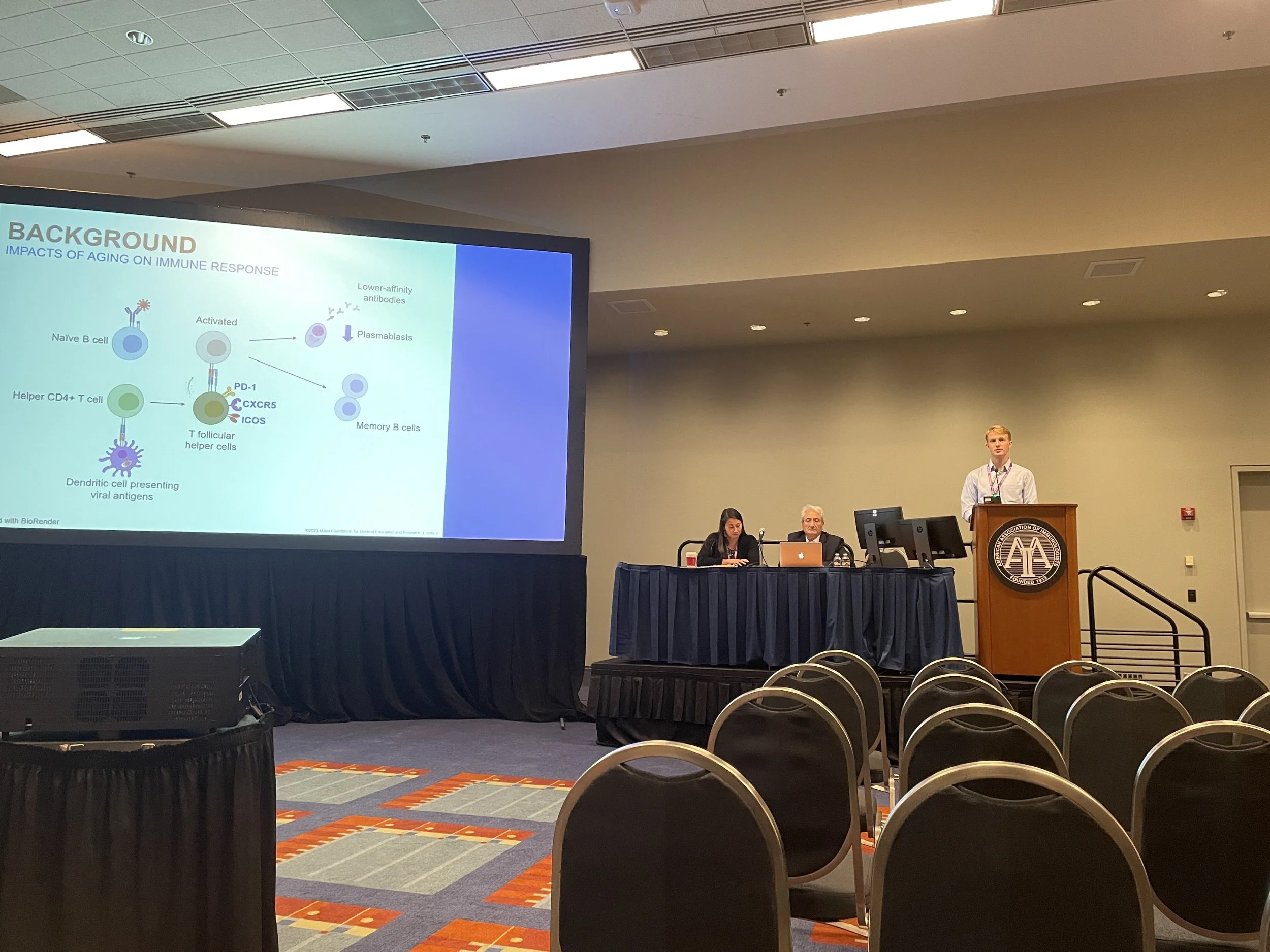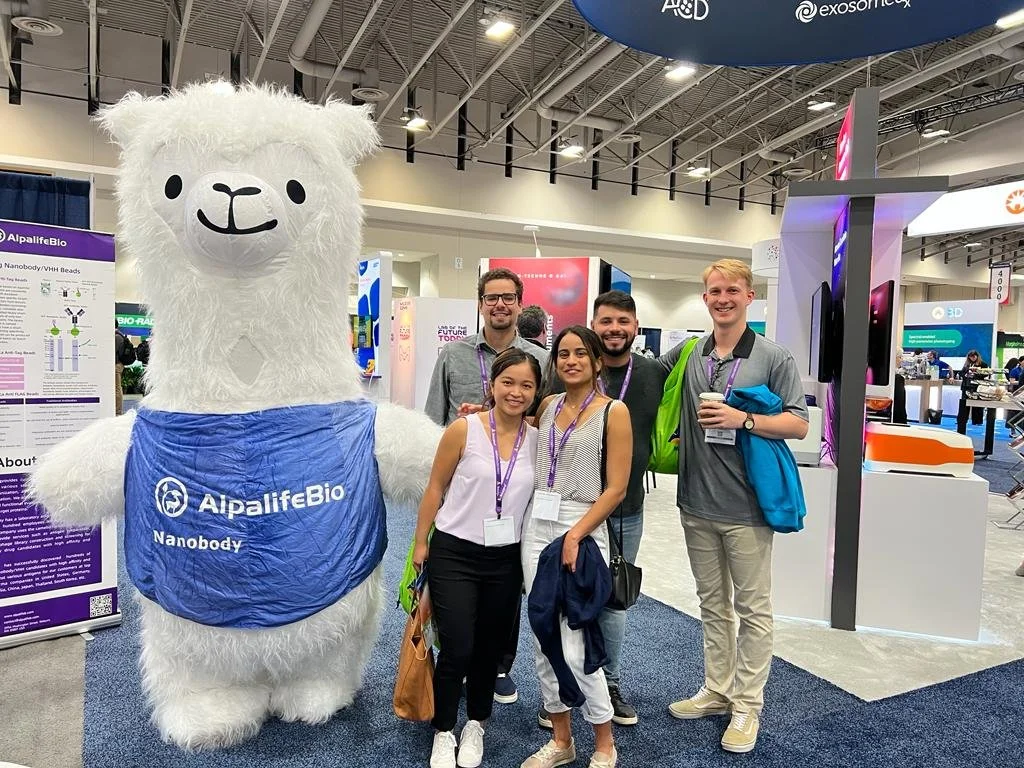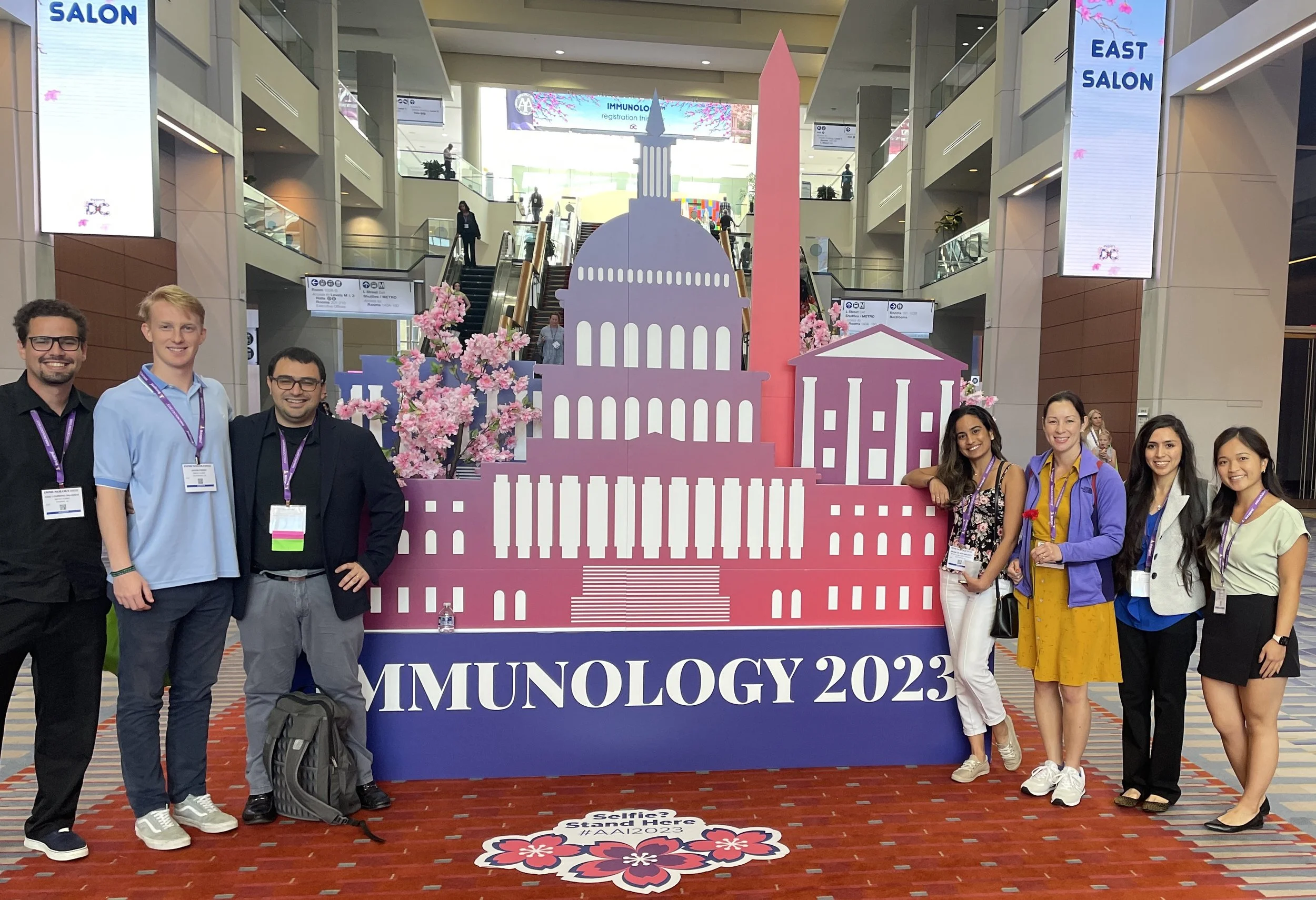2023 AAI Recap, and a Side Quest at the NIH
I had been on the fence about attending the Annual Conference for the American Association of Immunologists (AAI) this year, as it is a gigantic event that can make me feel somewhat lost and overwhelmed at times. However, I was ultimately swayed to go because it was being held in Washington, D.C., near the Bethesda, MD homebase for the National Institutes of Health (NIH).
Kicking off my summer 2023 scientific travel in Bethesda, Maryland
First time back at the NIH campus in 5 years
NIA Workshop
The National Institute of Aging (NIA) was hosting a workshop together with the National Institute of Allergy and Infectious Disease (NIAID) and the National Institute of Dental and Craniofacial Research (NIDCR), and it featured a stellar lineup of top aging researchers. Some of my favorite talks:
Day 1 Keynote by Mark Davis: I am totally swayed by Mark’s clarion call for better research in human immunology. His logistical pipeline for acquiring human immune cell samples and conducting robust benchtop assays is inspiring. See his organoid system.
Emmanuelle Passegue: I have been investigating the role of aging lymphoid stromal cells in modulating T cell responses, and so Emmanuelle’s work in aging bone marrow stroma and their influence on hematopoietic stem cell regeneration felt very familiar and offered important avenues for me to think about. I liked her success with the strategy of blocking inflammatory cytokine interleukin-1 and seeing a rejuvenation of the bone marrow.
Jarrod Dudakov: I miss working on the thymus, so it was cool to see insights from single-cell RNA sequencing of young and aging involuted thymus stroma, including the rise of curious age-associated epithelial populations.
Scott Budinger: Cool talk about aging and the risk of lung disease by pneumonia, the #1 cause of death by disease, especially in men. A powerful human patient study finds that aging does not impact clinical score, but rather the length of stay during SARS-CoV-2 infection. These results were then related to a cellular model in which monocyte-derived alveolar macrophages (which are transcriptionally different with age) are the ‘Trojan horses’ that bring SARS-CoV-2 infection into the lungs. The impact of aging profibrotic monocyte-derived alveolar macrophages could also be tinkered with therapeutically.
Day 2 Keynote by Laura Niedernhofer: A hallmark of aging is the accumulation of senescent cells, which are defined by telomere attrition, a state of cell cycle arrest, and the smoldering secretion of inflammatory factors. Senescent cells have been implicated as having a causal role in aging, especially in regard to healthspan rather than life expectancy. Laura’s research is based on the observation of patients with progeroid syndrome, in which mutations in DNA repair enzymes cause rapid aging phenotypes. Mice have been engineered with the deletion of ERCC1 DNA repair endonuclease, which recapitulates the human syndrome. They also found that ERCC1 deletion in hematopoietic cells drives senescence in all organs, demonstrating the powerful role of the immune system. The talk finishes with COVID-19 work in mice, in which inbred lab mice (who have been kept clean and pathogen-free) are housed with pet shop mice (who have previously been exposed to environmental pathogens). Young lab mice do fine but old lab mice quickly catch beta-coronavirus (MHV) infections and die. However, old lab mice infected with MHV before going to live with petshop mice have developed immunity and are safe, and similarly old lab mice treated with senescent cell-clearing drugs also were resistant. Thus, addressing aging phenotypes, especially in immune cells, can likely improve health outcomes against disease for older individuals.
Maria Mittelbrunn: I have been having to piece together my understanding of T cell metabolism as best as I can for our lab’s current research on immunization responses, so it was great to have a talk from a world expert. Old cells accumulate damaged mitochondria, and so to simulate this they deleted the Tfam gene in mice, a regulator of mitochondrial DNA in T cells, and found that it recapitulates hallmarkers of T cell aging, including the loss of naive T cells, expansion of memory T cells, reduced costimulatory CD28 expression, and increased expression of differentiation marker KLRG1. This was correlated to increased heart failure and mortality, decreased cognition, and sarcopenia, suggesting that immunometabolism really impacts all facets of healthspan.
Arya Biragyn: Seeing this talk alone was worth the entire trip for me. Aging is the number 1 risk factor for cancer, but I have struggled to find a suitable animal model to study cancer in aged organisms. This is because we ran a pilot experiment, in which melanoma cancer was ectopically transferred to young and old mice, but the tumors grew slower in the old mice. Looking to previous studies, I found that many scientists had already seen the same thing. Likely, tumors in old patients start earlier in life, around middle-age, but then have a long time to establish and grow before they are detectable. How could we model this in a lab? Arya showed different types of cancer models, with similar results as mine with melanoma, but more aggressive tumors in old mice when using breast cancer. Of all things, the increase of exhausted killer CD8+ T cells in the old mice was dependent on B cells. The aged CD8+ T cells were also inherently poorly equipped to fight cancer.
As an attendee in a small group of about 60 scientists, I had my own desk placard.
AAI Conference
After the meeting I took an Uber ride downtown, as the AAI conference was to be held in the Walter E. Washington Convention Center. The weather had been quite humid and swampy when I arrived earlier in the week, but now felt mild and breezy, which I greatly appreciated. I am at home in hot weather but am glad to have a little escape! Also, urban downtown centers are much more enjoyable when you aren’t baking in the sun.
I did not make too much time for sightseeing, but did manage a stroll around the Washington Monument
Traditionally, the conference would start Thursday evening with the opening address by the AAI president. However, this year there were sessions being offered during registration on Thursday afternoon, and among these was “Immune Therapy in Cancer,” and my 3rd-year graduate student Tina Kwok was presenting her research project. I am tremendously proud of Tina, as she has taken my barely-formed idea to study cancer and made it into a real research project. The session, in general, was also terrific, being moderated by Michael Farrar and Tyler Curiel. Understanding the biology of the anti-tumor immune response is such a critical need in the field, and so it was amazing to see what other groups on the leading edge were doing. I particularly enjoyed listening to talks by Michael Walsh, exploring the anti-tumor mechanisms driven by interleukin-21, Clare Murray, demonstrating how genetic depletion of PD-L1 in tumors makes them sensitive to drugs that target the DNA damage repair machinery, and Christina Kratzmeier, who nicely showed that mouse lung and melanoma tumor models have opposite responses to inflammatory signaling blockade.
Small but mighty Tina at the podium, presenting her project on immunotherapeutic responses of macrophages to a packed room
I was very excited to attend the seminar given by Shane Crotty, who was receiving a career award for his seminal work on the generation of antibody responses. Our lab is currently investigating differences in antibody generation biology with aging, and so his overview on the transcriptional regulation dynamics between Bcl6 and Prdm1 was very helpful (see this cool animation?). Shane has been exploring these mechanisms in relation to HIV, which has been a struggle for vaccine development, and most recently in COVID-19, among the first insights into the durabilities of the various vaccine strategies. The cellular mechanisms that govern vaccine responses are still being mapped out, so I look forward to future insights from the Crotty lab.
One of the featured talks was Tony Fauci, who recounted his journey as NIAID director and scientific adviser to the White House during the pandemic. It was a huge packed audience, and he was escorted in with a security detail.
I don’t have any active projects studying the biology of the thymus at the moment, but I still enjoy learning about advances in the field. My favorite talk was from Sarah Wedemeyer, whose project motivation is to reverse age-associated thymus involution. She described the role of mTOR signaling ligands in medullary thymic epithelial cells, which may be driving the reduction in the size of cortical thymic epithelial cells. I am so intrigued by the possibilities behind her mTEC-specific reporter mouse and how it can answer questions regarding the thymus with age.
Paul Kubes was a speaker for a major symposium on the myeloid cell tissue environment, and I am always excited to see his work featuring live-cell microscopy. Even better, he was discussing his work on macrophages within the liver microenvironment, which I have been interested in studying in the context of liver cancer. The liver feels so exotic to me, having done my work primarily in the lymphoid organs, and furthermore, the liver has critical roles in immunity and body homeostasis. Using imaging, Paul beautifully showed how liver fibrosis changes the architecture of Kupffer and hepatic stellate cells, and this changes the roles and location of macrophages that are important for resolving infection.
I attended a session on “Vaccination against Pathogens at Different Stages of Life and Disease” as my lab’s post-bac technician Jacob Fisher was also selected for a podium talk. Jacob’s productivity has been astounding, and his efforts have carried our lab’s work on the aged immunization response. In addition to his talk, I was really excited by a presentation by Ebony Gary, who, like our studies, has been investigating the aged immune response in the mouse model. Her work was focused on strategies that would bolster vaccine responses, which include the co-transfer of agents encoding the adenosine deaminase-1, an enzyme that improves the function of CD4+ T follicular helper cells.
Jacob sets the stage for cellular mechanisms that contribute to age-associated deficits to the vaccine response.
Having been to many AAI conferences over the years, I am tired of hustling at the vendor booths in order to collect science pens and trinkets. Now, I only visit booths if I really want to talk to the vendors about their products or ask for coupons. I recently won a grant from Miltenyi Biotec to try out their multiplex immunofluorescence platform, the MACSima. The preliminary results have been very exciting, and I am hoping to bring one of these devices to my institution. At the conference vendor show I had the opportunity to meet the application scientists and sales specialists in person and to see the instrument demo. Furthermore, the company was kind enough to invite me and my plus one to a nice dinner. I really enjoy having the opportunity to network and develop relationships with scientific vendors. Their work and knowledge is so fundamental to my ability to carry out cutting-edge science.
Arizona lab members enjoy the tradeshow, with AlpalifeBio featuring an alpaca mascot!
A couple of weeks prior to the conference, an AAI representative reached out to me and asked if I would be interested in volunteering my expertise to the organization. Because of its overlap with socially sensitive topics such as vaccination, AAI has been developing methods to reach out to the public. I was asked to answer questions on camera for upcoming social media segments, in which I would answer questions about immune aging for Gen X Americans. Since the start of the pandemic, I have had similar media opportunities, as my organization is a known and trusted medical source, and so I was up for the challenge. I think the experience went well, and hope to update this post with any media that is put out by AAI. In addition to the outreach program, I happened to be next door to media staff that were set up for the AAI Storybooth. They asked if I would answer questions for their segment, and as I was already warmed up I sat down for a few minutes. These experiences were pretty fun overall and gave me a new perspective and appreciation for professionals that work in front of the camera. It is quite a skill they develop!
Edit: Here is the finished video!
We managed to come together at the busy conference to enjoy one of many delightful international foods in the D.C. area—Venezuelan arepas!
The Lancaster and Borges da Silva labs representing Mayo Clinic Arizona at AAI 2023. Until next time!
It was a long and busy week that continued on through the weekend—yet it was back to the lab again on Monday. This was my first big trip of the summer conference season, and I am once again inspired by new ideas and motivated to reach higher goals in science. In the past I have been an attendee at AAI, a podium talk presenter, and now a mentor to trainees giving their own talks. In the future I hope to reach the next professional steps, either being invited to a major symposium talk or moderating my own session. And of course, AAI will be in Hawaii in 2025!
